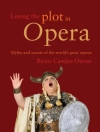Sight-reading is an important aspect of making music and should in some form become a regular part of a student’s routine each time they play their instrument. Regular sight-reading helps the pupil to gain greater confidence when approaching any new piece of music for the first time.
Schott’s Sight-Reading books aims to establish the habit early in every student’s learning process and the emphasis is on providing idiomatic tunes and structures for the specific instruments rather than sterile sight-reading exercises. Starting from very easy pieces with familiar shapes and rhythms, the range of notes, keys and rhythms gradually develops. In addition to this, each section of the books concludes with duets and accompanied pieces allowing the student to gain experience of sight-reading within the context of ensemble playing. Accompaniment exercises can be found at the end of the piano books.
İçerik tablosu
Preface – To the pupil: why sight-reading? – Section 1: Notes G-C – Solos – Duets Accompanied pieces – Section 2: Notes C up to G – Solos – Duets – Accompanied pieces – Section 3: Range G-G – Solos – Duets – Accompanied pieces – Section 4: Range d-A – Solos – Duets – Accompanied pieces – Section 5 :Range B to B – Solos – Duets – Accompanied pieces – Section 6: Range: from B to Middle C – Solos – Duets – Accompanied pieces – Section 7: Revision in times and keys – Swing rhythms – Solos – Duets – Accompanied pieces – Section 8: Range low B to high G – Solos – Duets – Accompanied pieces – Section 9: Range: B to high A – Solos – Duets – Accompanied pieces – Section 10: Range B to high E – Double sharps and flats – Solos – Duets – Accompanied pieces – Section 11: All keys and all styles – Full range of notes and tonalities Solos – Duets – Accompanied pieces
Yazar hakkında
John Kember studied at Trinity College of Music, London and has enjoyed a varied career in both performing and academic spheres, ranging from teaching in schools and privately, to working as composer, arranger, pianist and conductor in Concert Halls, theatres and recording studios. Currently John is working on a number of new and exciting projects for both publication and performance. He has a busy private teaching practice in south east London and teaches for Kent Music School and the Kent Centre for Young Instrumentalists in Maidstone. John was an examiner for the Associated Board of the Royal Schools of Music from 1989 until 2005












